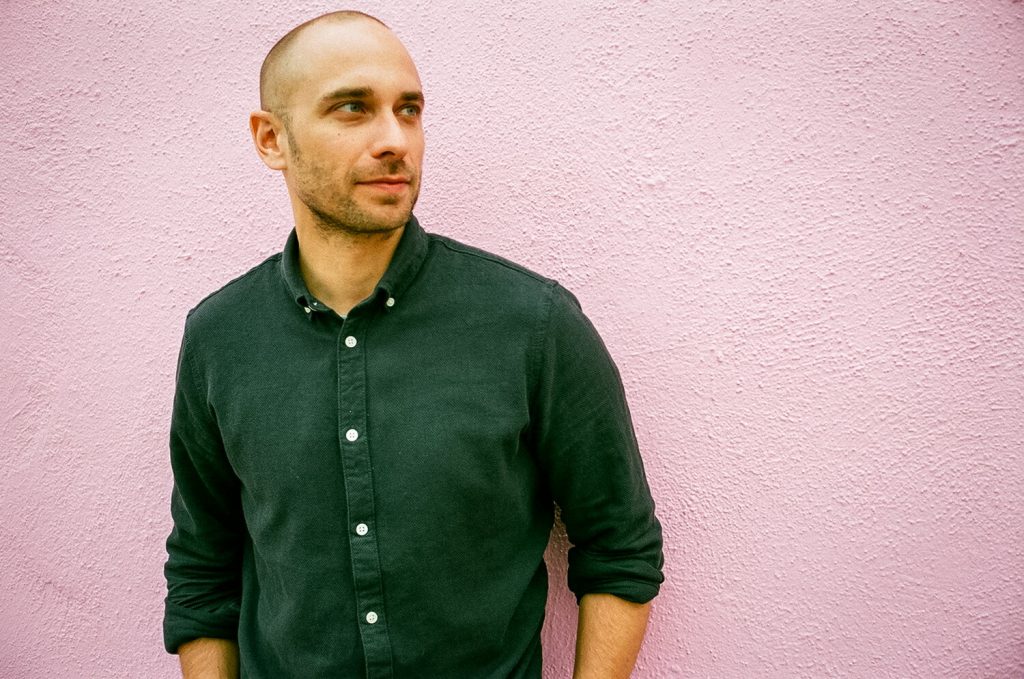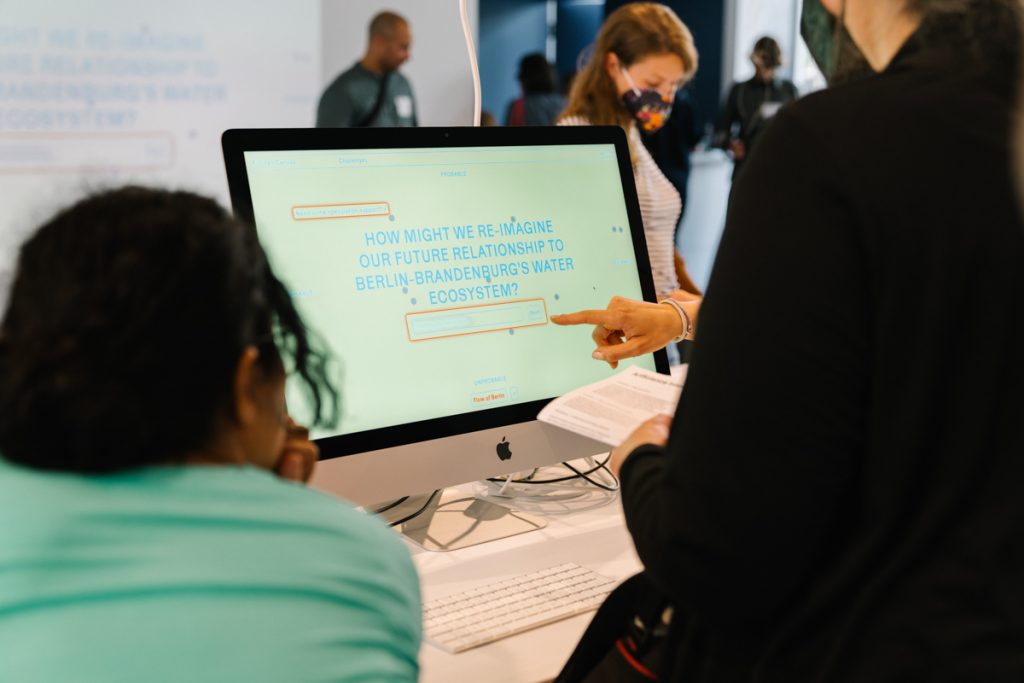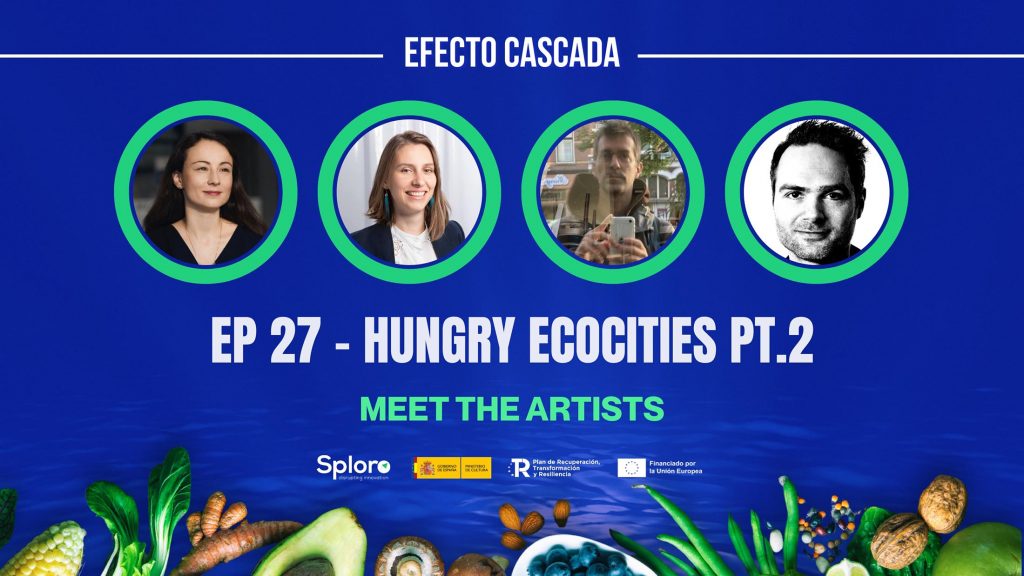Futures Canvas: The Power of Collective Intelligence
Interview with Christian Rauch
by Ana-Maria Carabelea
Christian Rauch is the founder and director of STATE – a Berlin-based initiative that builds cultural programs at the intersection of science, art, and society to help forward ideas for a sustainable future, as well as one of our Regional S+T+ARTS Centers. With a background in physics and a lifelong passion for arts & culture, Christian founded STATE in 2014 to stimulate exchange around relevant topics of cutting-edge research and facilitate creativity without borders and is now responsible for creative concepts and strategy.

What is Futures Canvas?
Christian Rauch: Futures Canvas is a digital participation tool for collective speculation and envisioning futures together. It helps organisations and groups map out future possibilities in order to allow for better – or at least more informed – decisions and actions in the present. It is especially effective in addressing large-scale, wicked problems, where we tend to believe that alternatives to the status quo are impossible. As a tool for collective imagination and intelligence, Futures Canvas can unleash the creative power of the crowd, reveal our individual and shared hopes, fears and expectations – and, in doing so, guide us towards new approaches and solutions.
Why should we all think more about the future?
Christian Rauch: Thinking about the future is certainly no easy task. But we all should practise it more often. Not to predict what comes next but to embrace the wealth of possibilities at hand and acknowledge them for our present. Embracing long-term thinking and hypothetical speculation or thought experiments gives us perspective and a sense of possibility. It allows us to stretch and expand our imagination beyond the usual focus on short-term results and resist status-quo bias. To find ways to deal with the multiple crises we face today, we need to embrace future thinking more proactively and work with future possibilities more creatively. UNESCO calls the ability to better understand and “use the future” a core capability of the 21st century. A skill that – like reading or writing – can and should be acquired by all those who wish to be future-literate.
How is Futures Canvas used by the Regional S+T+ARTS Centres for their project, Repairing the Present?
Christian Rauch: Since February, the selected S+T+ARTS residency artists have been working on their artistic concepts and prototypes in exchange with the local experts. Futures Canvas is now used to expand participation to the public level and invite a broader audience to speculate alongside the artists and local experts about the key ideas behind the projects. 12 different challenges of the S+T+ARTS Residencies hosted by Repairing the Present are currently open for participation on the platform. Artists and experts have shared key thoughts and ideas connected to the S+T+ARTS Residencies’ topics and artworks to pre-seed the canvases before inviting the general public to engage with these ideas and share their own speculations. The results are part of the collaborative approach of the S+T+ARTS Residencies and inform the artistic process and the final documentation. Additionally, Futures Canvas will be used and exhibited in the final exhibition phase at ZKM.

Why is a tool like Futures Canvas important?
Christian Rauch: I believe that we often simply cannot imagine that positive alternatives to the status quo are possible. And we lack compelling examples of what these alternatives may look like. Sir Geoff Mulgan claims in his current book “Another world is possible” that the world is facing an imagination crisis, and I would very much agree with this. We need to find ways to creatively imagine alternative futures – and we need to unleash the power of the many to do that. Most of the time, innovations – in business or society – are developed in a very top-down approach by one or a few people and are based on these individuals’ thoughts, beliefs and ideas. But sustainable solutions need to integrate many different viewpoints to be inclusive and durable, especially in the case of many of the wicked problems we face today. So how might we do that? First, we need to involve as many people as possible in re-thinking solutions, and, secondly, we need to adopt a very wide, speculative and explorative mindset. With Futures Canvas, we propose to start with uncovering our individual and collective hopes, fears and expectations. The way we act in the present is shaped by our anticipations about the future. But what do we anticipate? We might not even be aware of our own beliefs regarding the future, let alone those of others. Futures Canvas allows us to make our implicit assumptions about the future explicit. And by comparing what we collectively hope for with what we expect to happen, we also have a powerful base for identifying possible solutions – in a transparent, open, dynamic and collective intelligence process.
How does Futures Canvas work on a more practical level?
Christian Rauch: Futures Canvas hosts challenges connected to a topic or problem that demand collective thinking and acting. Challenges are open for public participation for a limited amount of time. They are initiated by a challenge host that serves as its ambassador and takes responsibility for it. Participants can interact with the platform in two ways: they can share their future speculations about a topic and rate the speculations of others. Speculations are hypothetical statements about future possibilities. These can be expectations, hopes, fears, or absurd thoughts and provocations. Participants evaluate the speculations of others by rating them according to two criteria – their perceived desirability and likelihood – which then determines their position on the virtual canvas. Thus, participants build a shared image of future possibilities through speculating and rating.
What is the story behind Futures Canvas, and how did you come up with it?
Christian Rauch: Futures Canvas is a tool based on the RIDE thinking model, a collaborative and experiential futures thinking method that I developed. In a nutshell, RIDE consists of a 4-step process that combines scientific reasoning with artistic imagination, and societal dialogue with entrepreneurial action. The method has been used to conceptualise the cross-sectoral, multi-stakeholder projects at STATE. But it is also used for workshop purposes inside or outside the context of STATE, e.g. for public engagement or executive education purposes. Lately, I have worked on a number of tools that make the RIDE method accessible for interested individuals and organisations. Most notably, the AKAW card game is a physical toolkit for groups to set out on collective, self-guided and playful thought experiments and explore and discuss the possibilities of the future. By now, several hundred copies of the game have been sold to individuals and organisations around the world.
Futures Canvas as a digital crowdsourcing tool was born from the question of how to allow for large-scale public participation in the projects at STATE. It is the second iteration of a digital toolkit based on the RIDE method. The first digital toolkit was developed in 2020 and used in the project Interweaving Change with the BMW Foundation as a crowd-sourced knowledge platform to map trends and speculations about a post-crisis society with members of a number of community hubs in Africa and Europe. Futures Canvas is a further development that allows hosting several challenges at the same time and has a much-improved user interface and design, as well as a couple of new features. The S+T+ARTS challenges have been the first ones to launch on Futures Canvas. It has been exciting to dive into all the regional topics and make them accessible for public participation on the platform.


